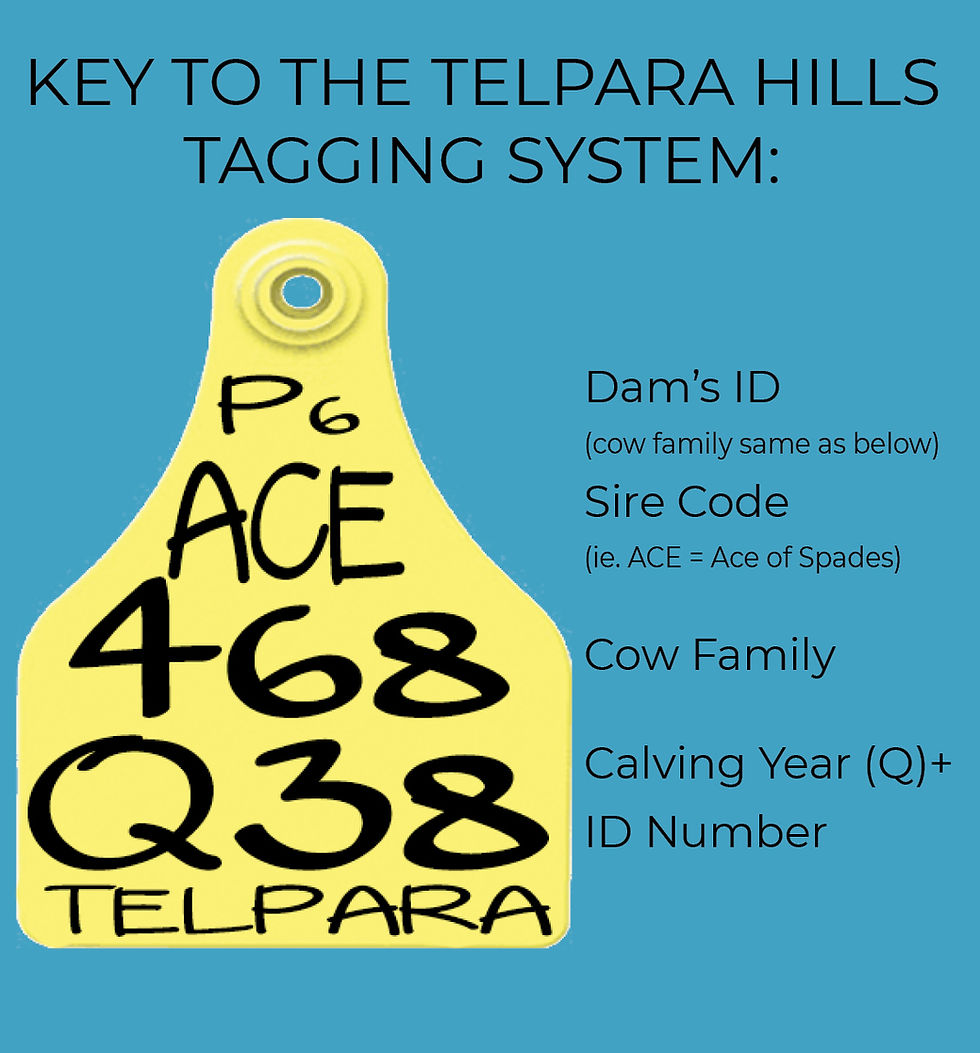F1 Brangus – Where to Next? A letter to Brahman Breeders from Trevor Pearce
- Brittany Pearce
- Aug 25, 2020
- 4 min read
F1 Brangus – Where to Next?
Advice from his Telpara Hills’ Experience
Written by Trevor Pearce, Telpara Hills Brangus 2015

Dear Brahman Breeder,
There is no doubt that Brahman cattle are well suited to the challenges of Northern Australia and will forever be a leading breed here. However with the popularity of Angus beef on the rise and the uncertainty of live export markets, many of you have already realised there is enormous potential in breeding Brangus.
You have probably already spent years perfecting your Brahman herd and want to use them as foundations. You know your cattle well and believe in their quality. Maybe you have already begun the process of introducing Angus sires to create Brangus.
The F1 generation of Angus x Brahman will express maximum hybrid vigour and will have given you an interesting start; but where to next?
Extreme caution and thought will be needed after you have made this F1 (first cross) generation.
We also used a great line of Brahmans to try and create new bloodlines in Brangus. We still have several of the resulting cows, and they are some of the most impressive females you will see anywhere.
This experiment also resulted in a lot of cattle that did not meet our standards, but there is still hope for founding a Brangus herd in this way. Do not make the mistake of mating your F1 cattle together (ie F1 x F1). Just like in hybrid crops, the first cross is uniform, but the next cross results in a complete range of types. It is likely that there will be variation in colour, horns, sheath issues and humps appearing in the resultant calves.
All composite breeds in Australia including Droughtmasters, Charbrays, Brafords, Brangus, etc. face this same issue to stabilise from this genetic and form a ‘breed’.
The aim of a new composite breed such as Brangus should be to produce bulls capable of giving consistent lines of Angus carcase orientated progeny with the survivability traits inherent in Brahman cattle.
After nearly 75 years in Australia, many Brangus cattle have struggled to settle into a ‘breed’ and still show huge variation with many animals showing a emphasis towards horns, humps, injury-prone underlines and colour problems.
This huge issue of unpredictability has been further exacerbated by studs re-introducing into their genetic mix one of the parent breeds. You hear comments that they were getting a herd too Angus like and vice versa. This reflects the very levels of genetic instability within their herds. In doing this breeders sharply further regress the stability of their genetics and stand little chance of ever breeding a fixed genetic line of bulls to market to their clients.
Telpara Hills has researched and sourced Brangus cattle worldwide and observed that all other countries with Brangus have established a fixed 3/8 Brahman and 5/8 Angus blood percentage for registered stud animals. This is the same percentage as was used by the Santa Gertrudis breed in their establishment from Brahman and Shorthorn in the 1920s.
Overseas, Brangus have flourished under this fixed percentage approach. After multiple generations of breeding with it a consistent style of Brangus has evolved. Stud Breeders have made a breed that looks like a super Angus with no hump, minimal sheath, slick coats and they are naturally polled, yet still tropically adapted.
Their carcase attributes are equally as impressive with high marbling large eye muscle areas, early higher weight gains plus they have the ability to meet modern market specifications in Australia. This ability of these stable 3/8 Brangus to produce progeny that gain premiums on the hook, accounts for much of the recent upsurge in demand for Brangus genetics today.
Telpara Hills’ outstanding success in Australia is due to this type of Brangus. In 2014 we produced Australia highest priced bull at $110,000 for ¾ share. Most importantly, our bulls and females achieve great commercial results in large commercial operations across Qld and are some of the most sought-after in Australia.
Your F1 females will be an asset. They will make great cows, but please learn from our experience.
After a series of breeding disappointments, we discovered that we could make huge strides towards stabilisation by mating these F1 females and their progeny to our multi-generation 3/8 Brangus genetics.
The resultant black progeny are firstly 44% Brahman, 56% Angus and prove to suit a group of bull buyers with their reduced hump, smaller sheaths and a few might have scurs – but certainly no horns.
The next generation will then give 41% Brahman progeny which start to closely resemble Black Brangus overseas. Each generation added will increase stability.
Telpara Hills has therefore done all the hard work and clearly shown that you can certainly stabilise and fix a type starting with F1 animals and using their imported multi-generational bloodlines.
As a result of this experience, our family at Telpara Hills encourage F1 Brangus breeders to seriously consider the benefits to be gained from this pathway.
I and my family are happy to discuss our experience with you and would love to hear how your path to Brangus is developing. Give us a call anytime.
Yours Sincerely,
Trevor Pearce Telpara Hills Brangus Seedstock Breeder since 1964




Comments